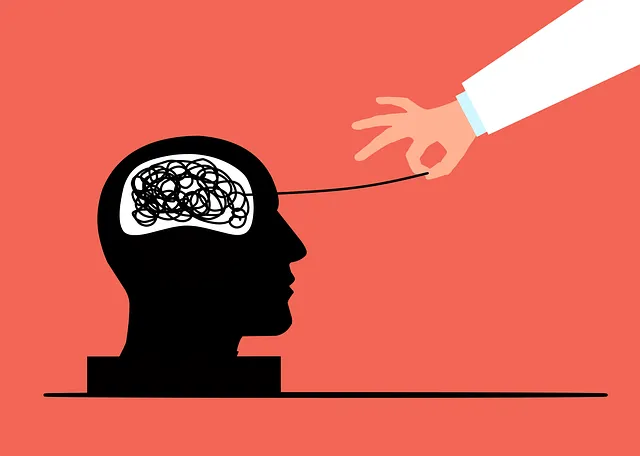The Kaiser Permanente behavioral health center in Longmont adopts a holistic approach to mental well-being, with positive thinking as its cornerstone. They offer tailored exercises, from meditation to gratitude journaling, to build resilience and reduce stigma. By integrating these practices into daily routines and providing supportive resources, patients gain tools for long-term optimism and improved life satisfaction. The center's evaluation process combines qualitative and quantitative data to ensure the effectiveness of their programs, fostering a warm, supportive community through workshops, team-building activities, and communication strategies.
Discover how Kaiser Permanente Behavioral Health Center Longmont revolutionizes mental well-being through positive thinking exercises. This comprehensive guide explores the power of positivity, offering a step-by-step design process for effective exercises. From integrating daily routines to measuring impact and fostering long-term engagement, learn practical tips and strategies inspired by KPBHCL’s success. Uncover how these practices can transform lives and create a supportive community centered around positive thinking.
- Understanding Positive Thinking: The Foundation of Well-being at Kaiser Permanente Behavioral Health Center Longmont
- Designing Effective Positive Thinking Exercises: A Step-by-Step Guide
- Integrating Positive Thinking into Daily Routines: Tips and Strategies for Success
- Measuring Impact: Evaluating the Effectiveness of Positive Thinking Exercises at KPBHCL
- Sustaining Positivity: Long-Term Engagement and Community Building at Kaiser Permanente Behavioral Health Center Longmont
Understanding Positive Thinking: The Foundation of Well-being at Kaiser Permanente Behavioral Health Center Longmont

At Kaiser Permanente Behavioral Health Center Longmont, understanding positive thinking is recognized as a foundational aspect of overall well-being. The center promotes the idea that cultivating a positive mindset can significantly enhance an individual’s ability to navigate life’s challenges and promote mental health recovery. This approach goes beyond mere optimism; it involves practical exercises and strategies designed to build resilience, one of the key components in fostering better mental health.
Through various programs and initiatives, Kaiser Permanente Behavioral Health Center Longmont aims to reduce the stigma associated with mental illness while increasing mental health awareness. By integrating positive thinking exercises into their treatment plans, the center helps individuals develop coping mechanisms that not only provide short-term relief but also empower them to maintain a more optimistic outlook in the long term. This holistic approach ensures that patients are equipped with tools necessary for resilience building and can lead fulfilling lives despite facing mental health challenges.
Designing Effective Positive Thinking Exercises: A Step-by-Step Guide

Designing Effective Positive Thinking Exercises involves a structured approach to help individuals cultivate a more optimistic mindset. At the Kaiser Permanente behavioral health center in Longmont, professionals emphasize tailoring exercises to meet individual needs and preferences. Start by setting clear goals aligned with the desired outcomes, whether it’s improving self-esteem, managing anxiety, or enhancing overall well-being. Incorporate a mix of activities such as guided meditations, affirmations, gratitude journaling, or even creative expression like art or writing.
Next, create a safe and supportive environment, encouraging participants to share their thoughts and experiences without judgment. Offer varied formats, including written, verbal, and interactive exercises, to cater to diverse learning styles. Gradually increase the complexity of challenges, starting with simple positive affirmations and progressing towards more intricate problem-solving scenarios. Regularly assess the effectiveness of these exercises through feedback mechanisms, allowing for continuous refinement and personalization. By following this step-by-step guide, individuals can harness the power of positive thinking as a powerful Stress Reduction Method while contributing to Mental Illness Stigma Reduction Efforts.
Integrating Positive Thinking into Daily Routines: Tips and Strategies for Success

Integrating positive thinking into your daily routine can significantly enhance well-being and overall life satisfaction. It’s a powerful tool that can be cultivated, much like a garden—requiring consistent care and attention to bloom. At the Kaiser Permanente behavioral health center Longmont, we emphasize the importance of this mindset shift as a foundation for mental wellness.
Start by setting aside dedicated time each day for reflection and gratitude practices. This could be as simple as writing down three things you’re thankful for or reflecting on positive moments from your day. Incorporate these practices into existing routines—like morning coffee or evening wind-down rituals—to ensure consistency. Additionally, seek out supportive resources like Mental Health Education Programs Design tailored to help individuals cultivate resilience and coping strategies. Remember, Trauma Support Services are also available if needed, offering specialized care to navigate challenging experiences and foster a more positive outlook on life.
Measuring Impact: Evaluating the Effectiveness of Positive Thinking Exercises at KPBHCL

At Kaiser Permanente behavioral health center Longmont (KPBHCL), evaluating the effectiveness of positive thinking exercises is a key step in understanding their impact on patient well-being and mental health. Measuring the success of these initiatives goes beyond simple self-reporting; it involves a multifaceted approach that includes qualitative and quantitative data analysis. Researchers at KPBHCL employ various tools to assess changes in patient attitudes, behaviors, and overall life satisfaction following participation in positive thinking programs.
These evaluations often encompass surveys, interviews, and behavioral observations to capture the nuances of resilience building and Mind Over Matter principles in action. By integrating Communication Strategies into their assessment methods, KPBHCL ensures that the exercises are not only enhancing cognitive processes but also fostering open dialogue and strengthening patient-caregiver relationships. This holistic evaluation process allows for continuous improvement in program design, ensuring that positive thinking exercises remain effective and relevant in addressing the unique needs of the diverse KPBHCL population.
Sustaining Positivity: Long-Term Engagement and Community Building at Kaiser Permanente Behavioral Health Center Longmont

At Kaiser Permanente Behavioral Health Center Longmont, sustaining positivity goes beyond mere words; it’s a cultivated mindset and a cornerstone of their long-term engagement strategy. Through regular workshops and group sessions, healthcare professionals and clients alike learn and practice communication strategies that foster an environment of warmth and understanding. These exercises not only promote positive thinking but also serve as effective conflict resolution techniques, ensuring everyone feels heard and respected. By integrating these practices into daily interactions, the center creates a supportive community where individuals can heal and grow.
The behavioral health center recognizes that maintaining positivity is a continuous journey. They organize team-building activities and workshops focused on enhancing interpersonal skills, encouraging active listening, and promoting empathy. These initiatives aim to strengthen the bond among staff members, fostering a collaborative atmosphere that positively impacts patient care. By embedding positive thinking and communication strategies at every level, Kaiser Permanente Behavioral Health Center Longmont sets itself apart as a beacon of hope and healing in the community.
Implementing positive thinking exercises, as demonstrated by the successful programs at the Kaiser Permanente Behavioral Health Center Longmont, can significantly enhance well-being. By understanding the foundational principles of positive thinking, designing and integrating effective exercises into daily routines, measuring their impact, and fostering long-term engagement, individuals and communities can reap lasting benefits. These strategies, inspired by best practices at KPBHCL, offer a practical roadmap for leveraging positive thinking as a powerful tool for improving mental health and overall quality of life.






